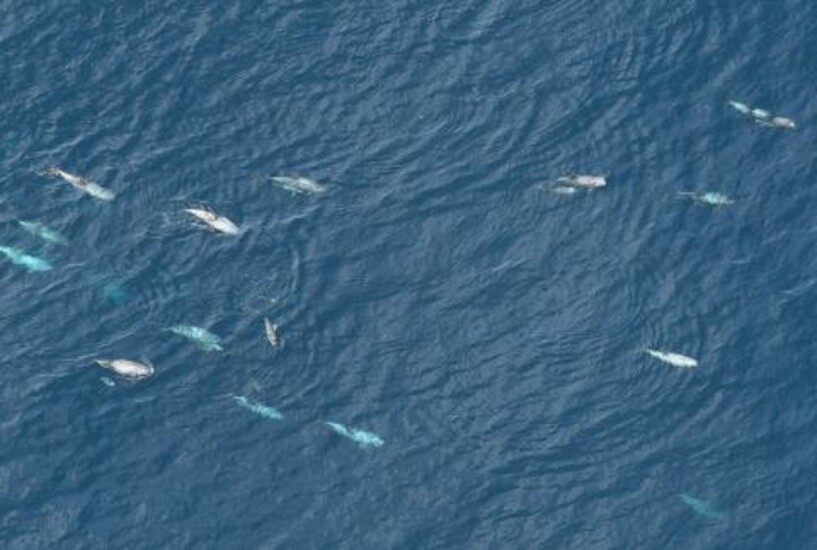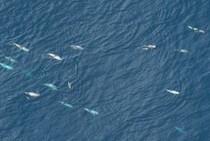Counting Whales From Space
CAMBRIDGE, MA—At the Our Ocean Conference in Oslo, Norway, the New England Aquarium of Boston, a global marine conservation organization, and Draper, a not-for-profit engineering innovation company in Cambridge, MA, announced a new partnership called “Counting Whales from Space.” The commitment focuses on developing technology to detect large marine life in areas of the world that are difficult to survey using traditional techniques. Together, the two organizations will devote $1 million to this partnership to engineer new capabilities to monitor the numbers and types of large animals at the ocean’s surface. New England Aquarium President and CEO Vikki Spruill announced the commitment Thursday morning at the Our Ocean Conference.
Created by John Kerry while Secretary of State, the Our Ocean Conference is the Davos of the ocean world, bringing together conservationists from government, industry, research institutions, and civil society not only to learn, but also to act for a clean, healthy, and productive ocean. A distinguishing element of this conference is that programming is punctuated by declarations of actions—“commitments”—by governments, organizations, and businesses. Commitments must be voluntary, significant, measurable, and have a clear timeframe. Additionally, commitments must be accepted by the conference and not every commitment submitted is accepted.
The aim of the Aquarium/Draper commitment is to create a more efficient and comprehensive method to gather information about whales and other large marine animals in difficult-to-access, offshore ocean environments. Currently, the most common way to gather such information is via aerial surveys, which are expensive, sometimes dangerous, frequently limited by bad weather, and often beyond the reach of small aircraft. Developing new technology that uses specially designed algorithms to process data from satellites and other data sources could better inventory and monitor whale and other large marine animal populations in remote marine protected areas (MPAs).
Draper will employ a multi-sensor fusion approach to quantify whale populations. Surveying whales by fusing data from multiple sources—including but not limited to satellites, sonar and synthetic aperture radar, combined with ocean state information such as currents, topography and weather—is expected to provide information on which the conservation community can act. Draper has a long history in integrating satellite imagery with other data sources to gain insights beyond standard application of remote sensing.
The Northeast Canyons and Seamounts Marine National Monument, located more than 200 miles east of Cape Cod, is a prime candidate to benefit from this technology. Currently, the Aquarium flies highly productive aerial surveys that reveal an amazing abundance and diversity of whale species there but are significantly limited by distance and cost. Using the science generated by this technology, documenting the habitats of whales and other large marine animals could help justify the expansion of existing MPAs or the creation of new ones. Currently, less than 10% of the world’s ocean is highly protected, but the scientific community is recommending increasing the target to safeguard 30% by 2030 to maintain a healthy ocean.
“We know that marine protected areas are a very effective tool to bolster the ocean’s resilience in the face of climate change and other human impacts,” said Vikki Spruill, President and CEO of the New England Aquarium. “This partnership combines the best conservation science with cutting-edge technology, so we can more effectively protect our planet’s greatest resource.”
Aquarium scientists over the past three decades have helped develop regulatory mechanisms that have significantly reduced human-caused mortalities in all large whale species. This new technology could much better inform government officials on how to more effectively and efficiently implement these measures for the benefit of all stakeholders, including the fishing, shipping and conservation communities and, ultimately, the whales.
This is the first-ever commitment for both Draper and the Aquarium at the Our Ocean Conference and is the first step in a developing relationship to identify solutions and commit to action for a clean, healthy and productive ocean. Funding will be provided by philanthropists, trusts, grants and other contributors wishing to support this commitment.
Released October 28, 2019







